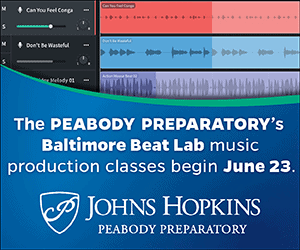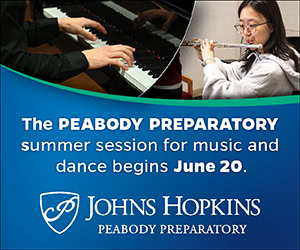NAfME BLOG
Mirror, Mirror on the Wall, . . . Am I Providing Opportunities Reflecting All?

/ News Posts / Mirror, Mirror on the Wall, . . . Am I Providing Opportunities Reflecting All?
Mirror, Mirror on the Wall, . . . Am I Providing Opportunities Reflecting All?
Expanding Diversity by Featuring Diverse Conductors, Composers, and Clinicians
By NAfME Member Lori Schwartz Reichl
This article was originally published in the November 2019 teacher edition of In Tune Magazine.
“Strength lies in differences, not in similarities.”
~ Stephen R. Covey
Since 2001 I have stood on the podium before numerous bands and thought I was enough. I thought the gender diversity I offered as a respected female conductor of secondary bands was significant, and enough for the growth of my musicians, audiences, and colleagues. I was proud to demonstrate that women can equally master the job of band director. I thought this was diversity, but I was wrong. Although I was providing gender diversity on the podium, I was not promoting diversity off the podium.

Photo by Aarón Blanco Tejedor on Unsplash
The composers whose music I chose to perform appeared the same. The guest conductors I selected to lead ensembles appeared the same. And, the clinicians I enlisted to adjudicate ensembles appeared the same. My students only saw white males inspiring them. I chose quality music, engaging conductors, and motivating clinicians, but I hadn’t connected, until recently, that all of these role models looked the same to the very diverse population of students I served.
“Our students need to see a reflection of themselves and others in the role models who stand before them.”
I didn’t recognize the disconnect, so I didn’t speak up about it. There was a need for diversity in my program, school, community, county, state, and nation, and I didn’t appreciate it. However, my vision has evolved, my values have grown, and my voice has emerged. I understand why students must hear, see, and experience diversity throughout the world and specifically in their music classroom and rehearsal space. Our students need to see a reflection of themselves and others in the role models who stand before them. It is crucial for acceptance, development, and unity.
The Reflection of the Conductor
In my four decades performing music, a female band director has never conducted me—ever. My performances playing saxophone in school, college, honor festivals, and community bands have all been under the direction of white men. Most of these conductors were remarkable in their leadership, musicianship, vision, and compassion, but, if their batons were removed, and I simply looked at the person standing before me, I would not have seen anyone who looked like me. My peers of various races also never saw anyone who looked like them. We were not provided an opportunity to see ourselves, or one another, in the reflection of our conductor.
The Reflection of the Composer
In January 2019, I interviewed Rob Deemer, Director of the Institute for Composer Diversity for the State University of New York (SUNY) at Fredonia (Fredonia, NY) for a publication. “The Institute for Composer Diversity is committed to the promotion and advancement of music created by composers from historically underrepresented groups, including women, composers from underrepresented racial, ethnic, and cultural groups, LGBTQIA+ composers, and disabled composers.”
Deemer’s reasoning for intentional repertoire selection caused me to reflect on my own past and future programming. I decided to review the countless concert programs I conducted throughout my career. I was disappointed to find that I had selected very few female composers and even fewer composers from other underrepresented groups. I had not provided an opportunity for my students to see themselves, or one another, in the reflection of the composers.
The Reflection of the Clinician
I have had the unique experiences of serving as an adjudicator, clinician, conductor, and speaker throughout the country to music students and educators. At first glance, some had preconceived thoughts about my ability to instruct and influence. However, after my task was complete, the feedback was usually positive, with the experience often described as “refreshingly different.”
Think about who hires the clinicians for your preparatory rehearsals, festival adjudications, and professional development sessions. Often, similar looking people are invited to serve in the role of clinician to adjudicate, facilitate, present, or speak. Once again, students and educators are not provided the opportunity to see themselves, or one another, in the reflection of the clinicians.
Magnifying the Lens
In teaching my graduate course, “Making Key Changes: Refresh Your Music Program” through the University of the Arts in Villanova, Pennsylvania, this summer, I referenced photos, videos, and advertisements from institutions, professional organizations, social media, and even my own website displaying only white men serving as selected adjudicators, clinicians, composers, conductors, and presenters for district, collegiate, county-wide, state, regional, national, and international events. “The lack of diversity in our profession is obvious, especially in the band world,” I told them. You could hear a pin drop in the classroom.
For this particular lesson, appropriately entitled “Get with the Program,” I asked my students to sit facing someone of the opposite gender. This seating, along with the content of the lesson, resulted in an honest and emotional conversation about the lack of diversity in music education and methods for diversifying music and leadership without sacrificing quality.
Sharpen Your Vision
When there’s no diversity represented in clinicians, composers, and conductors, how often have we explained, or heard someone explain, “I selected the best [adjudicator, clinician, composer, conductor, presenter, music, etc.]”—or, “I tried asking [so-and-so], but he/she was not available”? At one point in history, such responses would have been acceptable. However, these responses are no longer enough. The first response displays a lack of knowledge. The second response displays a lack of effort. Furthermore, they both display a lack of analysis and consideration.
Cultural diversity is defined as the existence of various social or ethnic groups within a society. It can also be represented by age, gender, race, sexual orientation, or ability. Superior music, exemplary musicianship, and motivational leadership exist in all cultures and ethnic groups. It is our duty to acknowledge this, educate ourselves, and provide a diverse representation of conductors, composers, and clinicians as a reflection of all students.
Jeff Gross, music educator at Shady Side Academy in Pittsburgh, Pennsylvania, has been inspired by members of his English department to consider this phrase: “When we pick our literature for each of the grades, we want our students to have both mirrors and windows, so they can see themselves and see into other cultures reflected in the work.” As music educators, are we using this same philosophy when we select a conductor, clinician, or composer’s repertoire?
Diversification does not equate to sacrificing quality. I have recently refined my thoughts and selection process in regard to the music I choose to program and the people I place in front of students, audiences, and educators. Although much of the same music and people will remain in my instruction, I am making a conscious effort to expand my knowledge beyond the familiar to explore diverse examples. I encourage you to do the same. Before selecting repertoire, inviting a guest conductor, or scheduling a clinician, look in the mirror and ask yourself one simple question: “Am I providing opportunities reflecting all?”
About the author:

Photo: Richard Twigg Photography
Lori Schwartz Reichl actively serves as an adjudicator, author, clinician, conductor, instructor, and speaker. Lori is the author of the “Tools for Educators” series entitled “Key Changes: Refreshing Your Music Program” published for InTune Monthly Magazine’s Teacher’s Edition, where she provides resources to enhance the music classroom and rehearsal space. Her column has been transformed into a summer graduate course that she instructs through the University of the Arts. Lori’s articles are also featured each month as part of the National Association for Music Education Music in a Minuet blog. In addition, her publications frequently appear in the Maryland Music Educator Journal and The Woman Conductor Journal. Lori also serves as a journalist for Teaching Music magazine and writes program notes for composers. In Maryland, she serves as artistic and executive director of the Regional Repertory Wind Ensemble, coordinator of Howard County’s Secondary Solo & Ensemble Festival, conductor of the Howard County Middle School Honor Band, and the Maryland state chair for Women Band Directors International. Visit her at MakingKeyChanges.com.
Did this blog spur new ideas for your music program? Share them on Amplify! Interested in reprinting this article? Please review the reprint guidelines.
The National Association for Music Education (NAfME) provides a number of forums for the sharing of information and opinion, including blogs and postings on our website, articles and columns in our magazines and journals, and postings to our Amplify member portal. Unless specifically noted, the views expressed in these media do not necessarily represent the policy or views of the Association, its officers, or its employees.
Catherina Hurlburt, Marketing Communications Manager. November 12, 2019. © National Association for Music Education (NAfME.org)
Published Date
November 12, 2019
Category
- Uncategorized
Copyright
November 12, 2019. © National Association for Music Education (NAfME.org)






